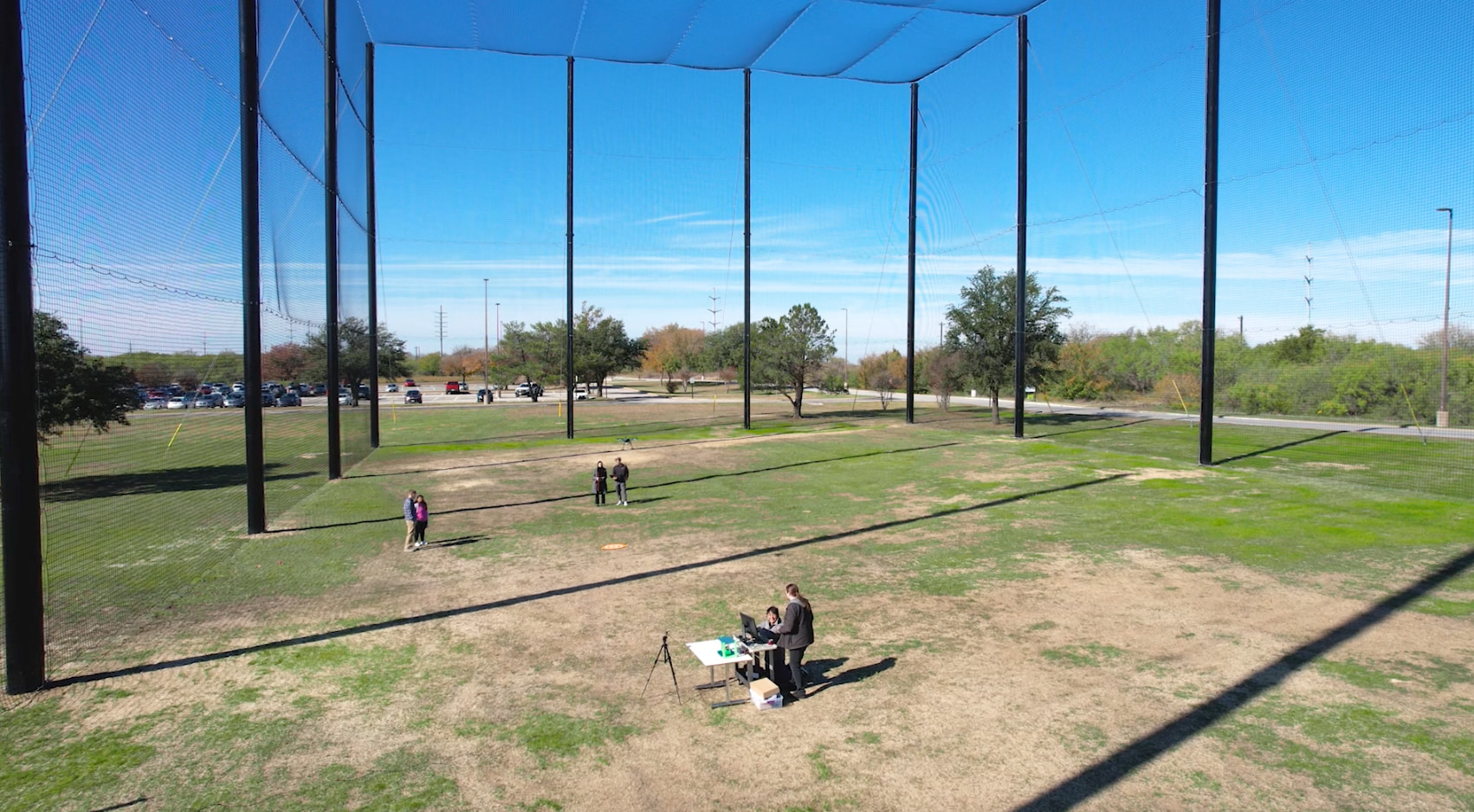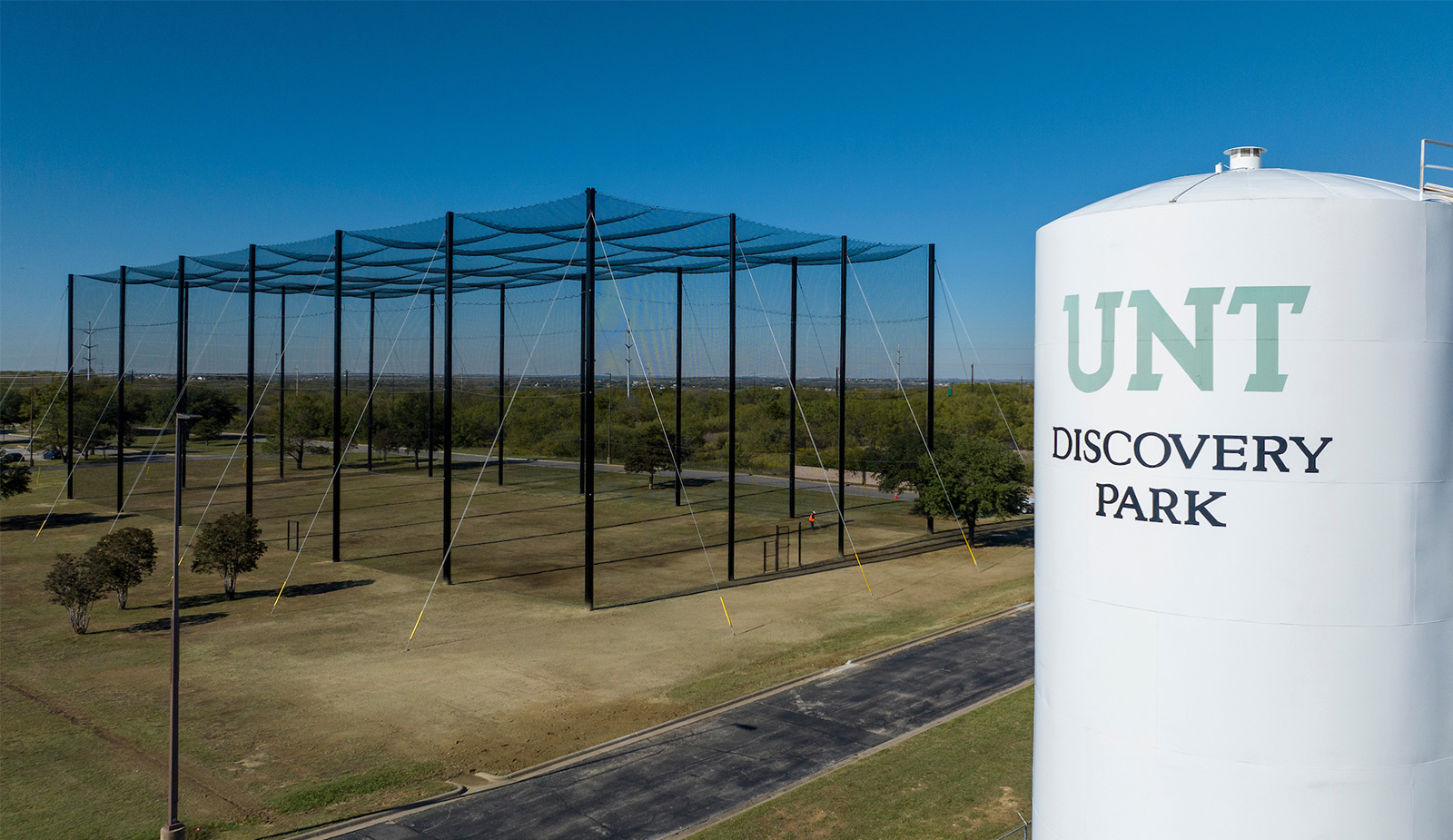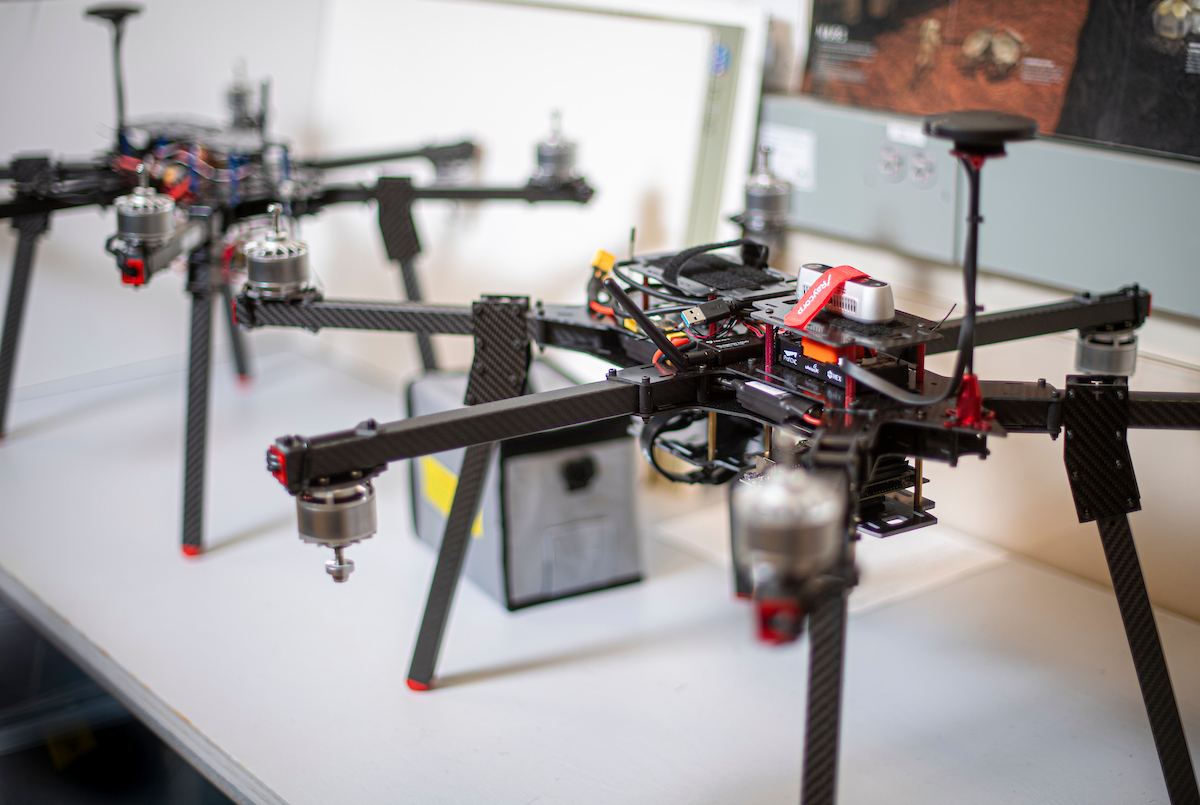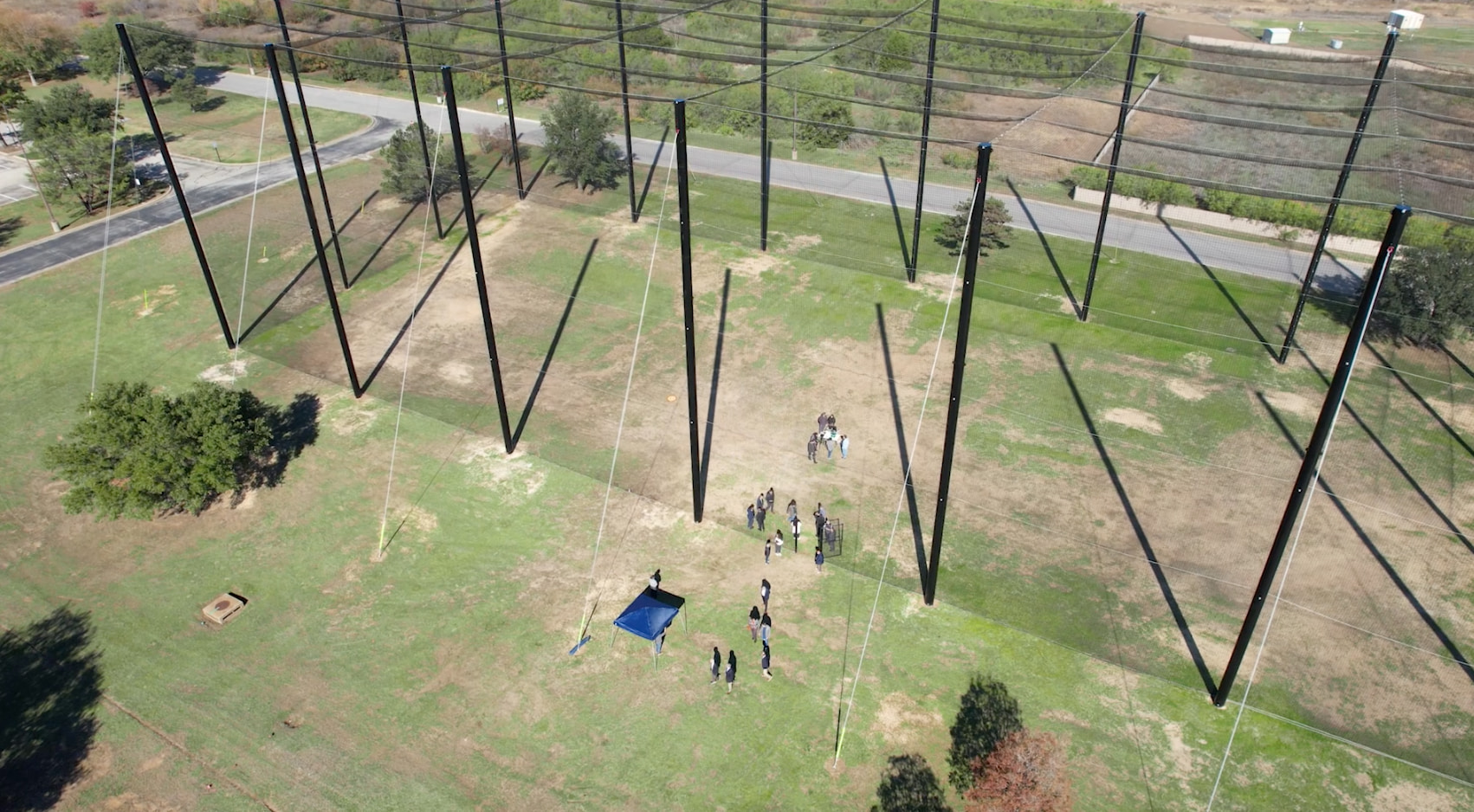Monday, March 25, 2024

DENTON (UNT), Texas — The University of North Texas is soaring into the next phase of unmanned vehicle use with the opening of the UNT Advanced Air Mobility (UAAM) test facility, at its Discovery Park, propelling research to new heights.
 The outdoor netted drone facility is part of UNT’s Center of Integrated Intelligent Mobility Systems (CIIMS), an interdisciplinary research endeavor paving the way for the future of
transportation and mobility. Standing at 80 feet tall, 120 feet long, and 300 feet
wide, the UAAM facility is the largest of its kind in Texas and one of the biggest
nationally.
The outdoor netted drone facility is part of UNT’s Center of Integrated Intelligent Mobility Systems (CIIMS), an interdisciplinary research endeavor paving the way for the future of
transportation and mobility. Standing at 80 feet tall, 120 feet long, and 300 feet
wide, the UAAM facility is the largest of its kind in Texas and one of the biggest
nationally.
Terry Pohlen, senior associate dean of the G. Brint Ryan College of Business and director of UNT's Jim McNatt Institute for Logistics Research, emphasizes the effective teamwork between the G. Brint Ryan College of Business and the College of Engineering at the new facility.
“It will really position UNT as a leader in advanced air mobility research,” said Pohlen, who also serves as co-director of CIIMS.
 Funding for the netted drone facility comes from the Jim McNatt Institute for Logistics
Research, the College of Engineering, the Division of Research and Innovation and the Office of the President. Construction began in 2022 under the guidance of
faculty affiliated with CIIMS. The center is creating solutions for the complexities
of devices such as unmanned aerial vehicles (UAVs) and autonomous cars from the programming
needed to operate them to policies guiding their successful integration into everyday
society.
Funding for the netted drone facility comes from the Jim McNatt Institute for Logistics
Research, the College of Engineering, the Division of Research and Innovation and the Office of the President. Construction began in 2022 under the guidance of
faculty affiliated with CIIMS. The center is creating solutions for the complexities
of devices such as unmanned aerial vehicles (UAVs) and autonomous cars from the programming
needed to operate them to policies guiding their successful integration into everyday
society.
In order to focus more on UAV research, faculty affiliated with CIIMS made the conscious decision to fully encase the facility in the netted material.
“The Federal Aviation Administration has a very rigorous regulation when it comes to flying,” said Shengli Fu, professor and electrical engineering department chair. “Because it’s fully netted, the facility counts as indoors so we can test without needing a certification every time. We can conduct more tests, accelerate the testing process, all while maintaining safety standards.”
 When conducting tests, users will be encouraged stay outside the netted facility while
a UAV is in operation. The netting provides a buffer, ensuring that the drone remains
within a controlled environment and away from potential hazards while still being
open enough that pilots can easily see inside. Only licensed drone pilots are authorized
to operate aerial UAVs.
When conducting tests, users will be encouraged stay outside the netted facility while
a UAV is in operation. The netting provides a buffer, ensuring that the drone remains
within a controlled environment and away from potential hazards while still being
open enough that pilots can easily see inside. Only licensed drone pilots are authorized
to operate aerial UAVs.
The facility will be available to both faculty and students. Some of the planned research includes testing new parts for drones, exploring safety measures like collision avoidance and examining communication between UAVs and ground vehicles. Given the facility’s large size, researchers can also test signal strength from multiple angles, heights and distances.
“Transitioning ground communication techniques to the sky isn’t straightforward,” Fu said. “The base must remain on the ground, presenting unique challenges that we will be able to address with this space. We’re used to thinking in two dimensions, but with UAVs, we must tackle issues in three-dimensional space.”
UNT researchers expects drone use to take off soon with endless possibilities. Freight delivery could move into the sky, hospitals could send air ambulances to transport critical patients from rural areas or drones could bring reception transmitters to areas affected by disasters.
Such research is already underway with UNT teaming up with government agencies and companies nationwide to test Advanced Air Mobility technologies. Researchers from UNT tested future airspace system automation, an electric Vertical Take-Off and Landing aircraft and a simulated air route between Discovery Park and Hillwood’s AllianceTexas Flight Test Center in Justin.
Electrical engineering professor and CIIMS member Namuduri sees institutions like UNT remaining crucial for uniting industries and government in ensuring safe UAV use.
 “As the industry progresses rapidly, the pivotal role of higher education becomes
clear. While the government concentrates on regulatory measures, it’s imperative for
educational institutions to ensure that companies develop technology ready for real-world
application. We can help with comprehensive testing of any ideas and concepts,” Namuduri
said.
“As the industry progresses rapidly, the pivotal role of higher education becomes
clear. While the government concentrates on regulatory measures, it’s imperative for
educational institutions to ensure that companies develop technology ready for real-world
application. We can help with comprehensive testing of any ideas and concepts,” Namuduri
said.
The UAAM is available for other organizations and start-up companies to test new drone technology. Along with industry partners, the CIIMS team expects the facility to help them engage with more younger students in the area and cultivate their interest in UAVs, engineering and logistics. The CIIMS team also said the facility would be available for students both at UNT and at other schools to come test their own concepts for UAVs and their use.
“This really is just the beginning,” Pohlen said. “For centuries, humans have grappled with efficiently transporting goods from one location to another. This facility equips us with new tools and approaches to tackle this challenge in innovative ways.”
UNT News Service Phone Number: (940) 565-2108
Media Contacts:
Amanda Lyons
Amanda.Lyons@unt.edu
940-565-2943
From UNT News – Engineering